St. Cloud, MN
619 W St. Germain St., Suite 214
St Cloud, MN 56301
(320) 203-4840
Green Bay, WI
520 N Broadway, Suite 270
Green Bay WI, 54303
(920) 884-1496
St. Cloud, MN
619 W St. Germain St., Suite 214
St Cloud, MN 56301
(320) 203-4840
Green Bay, WI
520 N Broadway, Suite 270
Green Bay WI, 54303
(920) 884-1496
We build websites. Our approach is a bit different, but don’t let that scare you away. We know how painful and difficult it can be for a company to go through a website rebuild, so we do everything in our power to make it worth it.
You want a new website, but what you need is an effective marketing tool. The good news is you can have both. Before we go too far, you should know that we typically run into two types of prospects:
 2. Those who want to grow their business
2. Those who want to grow their businessThe first guy wants a brochure. The second guy wants a powerful tool to market his business.
We look to the latter because we believe in partnering with our clients to grow their business. We do this through inbound marketing, and your website is your most important tool for the inbound methodology. It acts as the main hub for collecting all of the information we need to help your business grow.
This is where things can be a little confusing. Let me elaborate on the differences between the two types of website designs.
If I were to write a prophetic statement about the one thing you should know about web design in the years to come it would go like this:
The online brochure is dead. The days of the set-it-and-forget-it web site are over. A new era of online experiences crafted around targeted, valuable content are upon us. Be ready to embrace it or get buried in your own inequity.
Sounds cool right? I may be attempting to sound overly dramatic but my hope is to give you something to think critically about. Is the online brochure really dead? No. It can serve its purpose if your aim is strictly to have an online presence for those who are handed your URL. Often times an online brochure-type of website is the industry standard. The competition isn’t doing anything bigger and better, so why should you bother? Maybe they don’t even have websites. Therefore, what’s always been done is good enough.
Before you can decide which style of website is right for your business, there are three questions you should think about:
If any of your responses are along the lines of:
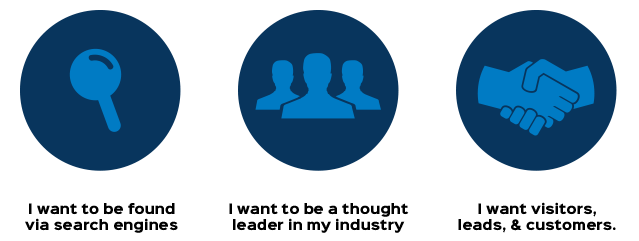
… then you might want to explore a more robust and targeted approach to your web site. Most importantly, a site designed with inbound marketing, or growth driven design, in mind. Your website needs to be more than a visual representation of your brand and several pages on what you do, have done, and want to do more of. You need a marketing machine that caters to your target audience and is able to support your business initiatives.
You should know that I’m only sharing this based on my own experiences. My own understanding and approach on web design has evolved from a single-cell organism to a living, breathing, complex creature that continues to grow and change every day. It can’t be tamed. It can’t be caged. It can only be observed, directed, and learned from. With a decade of web experience rattling around in my noggin, all I can say is that when you think you have something figured out, it’s going to change.
Ten years ago, I was a designer who loved print and was given the opportunity to work on a web design. There were many standards and rules I needed to learn and follow, all of which were new to me: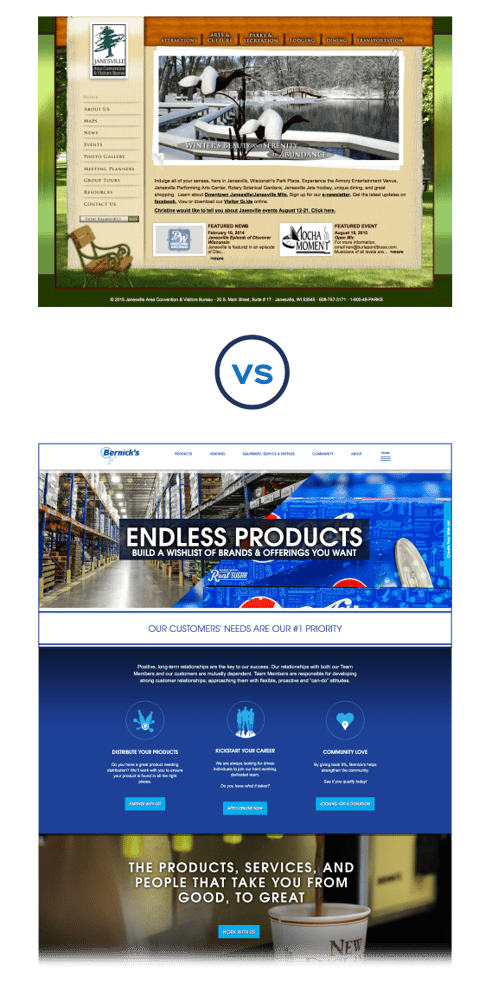
This has now evolved to:
It used to be good enough (and a hell of a lot of work) just to have an online presence. You just need something right? So you can put that pretty little .com on your brochure and business cards and people could learn more about you.
Times have changed, my friend.
As designers we focused our energy and attention on your visual brand and how to make that consistent with the rest of your materials. We also needed to think about how the site should be structured to house all of the necessary information. We designed and built shells. Empty houses for our clients to enter their content into and when it was done, you were good. Sit, wait, and reap the benefits. “If you build it, they will come.”
I have painstakingly learned over the years that as soon as I had something figured out or got good at it, it changed. And it continues to change for me everyday. I could go on forever with the differences between then and now, but what I want to focus on most is the idea of what a web design is, what it should be, and how it should work for you. In the end, we are all about one thing. Generating results.
The days of “old” are not forgotten. We still design around your brand, define your site map, and make sure we have the correct target audience in mind. However, the shift for us is different now. It’s about the user, not what your CEO wants. The journey we want them to take on your site is based on research, data, and focused strategy. The path we want them to take and the questions we answer for them is based on data and research—educated guesses are now replaced with guided, informative intuition and factual research.
To simplify this prophetic way of thinking, I’ve broken the process down into the five major components of a successful, results-driven website:
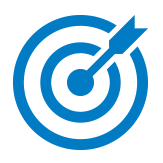 What the hell are you going to do with this thing when it’s built anyway? You don’t build a car to stick it in a field and you shouldn’t build a website to let it dissipate into the anonymity of the web. You built that car so you could drive it, travel places, transport objects and people, and ultimately have it take you where you want to go. Wherever you want your business to go, your website is a vehicle to get you there, but first you need to identify the ‘where.’
What the hell are you going to do with this thing when it’s built anyway? You don’t build a car to stick it in a field and you shouldn’t build a website to let it dissipate into the anonymity of the web. You built that car so you could drive it, travel places, transport objects and people, and ultimately have it take you where you want to go. Wherever you want your business to go, your website is a vehicle to get you there, but first you need to identify the ‘where.’
Goals bring focus.
You should not only want to be found online and communicate about your business, but you should also want increased traffic and returning visitors. Ideally, those returning visitors will become leads that one day become customers and then (heavens to Murgatroyd!) delighted evangelists of your brand. And not only that, but how many of each do you want? What is the return you are going to get on your time and investment? All of these things should be taken into consideration and documented to frame up and set the foundation for you website rebuild.
For example, if we looked at your past analytics and saw you had an average of 500 visitors a month we might set a goal of 1000 visitors per month post site launch. Once we hit that goal, we would focus on converting the visitors to leads. And after we hit our leads goal, we would focus on turning them into customers. How many visitors will it take to get the leads that will convert into customers? It all depends on your business and your industry.
If you aren’t identifying these goals, then why bother building anything? Come on. It’s a nice vehicle, take that beast out for a drive and be confident that it will get you to where you want to go.
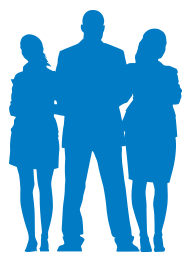 Now that you know what you want to do, you need to know who you are trying to do it for. If you’re trying to talkto everyone,
Now that you know what you want to do, you need to know who you are trying to do it for. If you’re trying to talkto everyone,
then you’re really not talking to anyone. Being everything to everyone does not exist. Let that mentality go. You there? Okay, now think about your true brand believers and the people who push your company forward. That’s who you want to talk to. By focusing in on them, you can bring focus to your content and simplify your messaging.
Visitors come to your web site looking to have a question answered. Just look at your own search queries—what were you trying to accomplish? Chances are that if it wasn’t for personal entertainment, you were looking for an answer to a question.
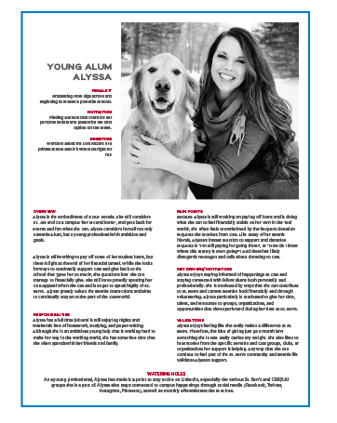
By evaluating who is coming to your site, you can start to research their needs, questions, pain points, and desires. Try to discover how they live, work, and feel so that when they stumble upon your site you can speak to them on their terms.
Whether or not you are planning on doing inbound marketing in your future, or using software like HubSpot, the most important aspect of your web design is identifying your persona(s). However, actually creating a detailed persona and integrating it into your online marketing strategy is even more powerful. Here is an example of what a persona could look like:
3. DEFINING YOUR PERSONA’S JOURNEY
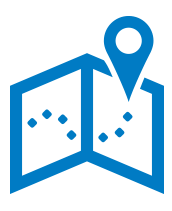 Okay, so we know that defining your persona is important, but actions speak louder than words. The next step is to take that persona and make your website a comprehensive journey designed to serve your prospects. Arranging content with your persona in mind allows the most important aspects of your business to come forward.
Okay, so we know that defining your persona is important, but actions speak louder than words. The next step is to take that persona and make your website a comprehensive journey designed to serve your prospects. Arranging content with your persona in mind allows the most important aspects of your business to come forward.
Your prospects are coming to your website to have a question answered. By keeping the persona in mind, you can supply those answers as quickly and clearly as possible, which allows the user to move on to the next step. Remember, the goal is to convert visitors into leads. In order to do that, you have to give them the opportunity to take the next step towards becoming that lead. We incorporate this technique into all of our website designs. An example of this is what we recently did for our client, Star.
Star is a creative firm that designs, executes, and builds experiences for stores, exhibits, tradeshows, and more. By studying their targeted persona, we recognized that their prospects typically want to first see Star’s portfolio. Once they are able to confirm that Star provides the type of service that they are looking for, the prospect then wants to see who they will be working with, and lastly they want to see proof that Star’s work works before contacting a rep. We arranged the website content to lead the user through all of these steps, answering each question as it came up.

Long story short, sometimes you have to offer your users a hand to hold. Guiding your prospects through the site is a powerful way to communicate the most important things that they need to know – when they need to know it - without boring them with the minute details.
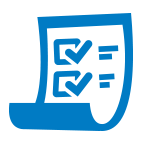 In order to design your website around your persona, the content has to be strongly aligned with answering questions the persona has. Every headline, sub headline, button, and block of content matters. These are all opportunities to keep your prospect engaged, and serve them the knowledge that they seek at a comfortable pace. This is your value proposition.
In order to design your website around your persona, the content has to be strongly aligned with answering questions the persona has. Every headline, sub headline, button, and block of content matters. These are all opportunities to keep your prospect engaged, and serve them the knowledge that they seek at a comfortable pace. This is your value proposition.
For example, what if a visitor wants to know what types of products you have, and the first thing they see is that you’ve been around for 50 years? Sure, your history is important, it has shaped who you are as a company - but do you think that is what matters most to a prospect? Probably not. Don’t make them dig to find the most important thing!
It can go the other way too. Maybe you know what your persona’s end goal is and you want to give it to them right away. Maybe your persona typically wants a free trial of your services. Even though this is the end goal, it shouldn’t necessarily be the first thing a website visitor sees. After all, why would they sign up for a free trial before they even know who you are and what you do? They haven’t come to trust you yet. It’s too soon.
By asking, “What value am I providing?” at every step, you can provide clarity with perfect timing. Google talks about this phenomenon in what they call ‘Micro Moments.’ By creating a map of your persona’s journey, you are able deliver the right content at the right time, optimize that content for the highest exposure, and measure every aspect to prove that it’s working.
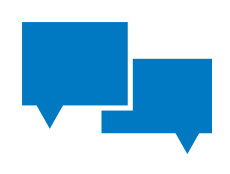 Bringing simplicity and clarity to your website is vitally important. It allows those messages -that value proposition- to stand out and be easily communicated. There is a saying that we designers know well, “If everything is bold, then nothing is bold.” If you try to shove everything you do in front of your prospect at once, they won’t be able to detangle the mess and find answers to their questions. Gone are the days when everything had to be ‘above the fold.’ Your website is not a newspaper stuck in a kiosk dispenser with a small window. Your website is an opportunity for a user to interact and navigate at their own pace.
Bringing simplicity and clarity to your website is vitally important. It allows those messages -that value proposition- to stand out and be easily communicated. There is a saying that we designers know well, “If everything is bold, then nothing is bold.” If you try to shove everything you do in front of your prospect at once, they won’t be able to detangle the mess and find answers to their questions. Gone are the days when everything had to be ‘above the fold.’ Your website is not a newspaper stuck in a kiosk dispenser with a small window. Your website is an opportunity for a user to interact and navigate at their own pace.
There are many ways to bring simplicity to your website. Here are a few:
A good example for designing with simplicity in mind is the Marco website redesign. On their old site, there was a LOT of content at first glance. Through research and data, we were able to determine that certain elements –like the homepage rotator- were not working. In the redesign, we made an effort to minimize the amount of stuff we had on each page and instead focused on addressing one or two questions per page. We were able to identify the places that visitors needed to go in order to move on to becoming a lead, so we made it really easy to access those highly trafficked pages.
All in all, don’t overwhelm your visitors. Your website should not be an explosion of information, impossible to dissect. Your website should be a tool for them to use at their own pace. Most importantly, don’t leave the arrangement of content up to guesswork. Designing a website isn’t about gut feeling, guessing, and giving the client exactly what they want. You can use data to determine where certain content should be placed on the website. It’s 2015. We can do that now.
We try to draw a balance between what the client wants and what we feel would actually work best based on the data we’ve gathered. You can have the best of both worlds. We believe that it’s our job to look beyond where you want to go. You want a website to tell your story, we give you a website that attracts visitors. You want to post a PDF of your process, we make that PDF into a downloadable offer and make it generate leads. You want to send a eNewsletter talking about your company, we give you an email marketing campaign to position you as a thought leader.
Whatever it is you think you need or want from your website, think about taking it five steps further. Only then will you turn your own ideas, dreams, and prophecies into reality.
We regularly share insights on how we approach marketing. Get on the list.
